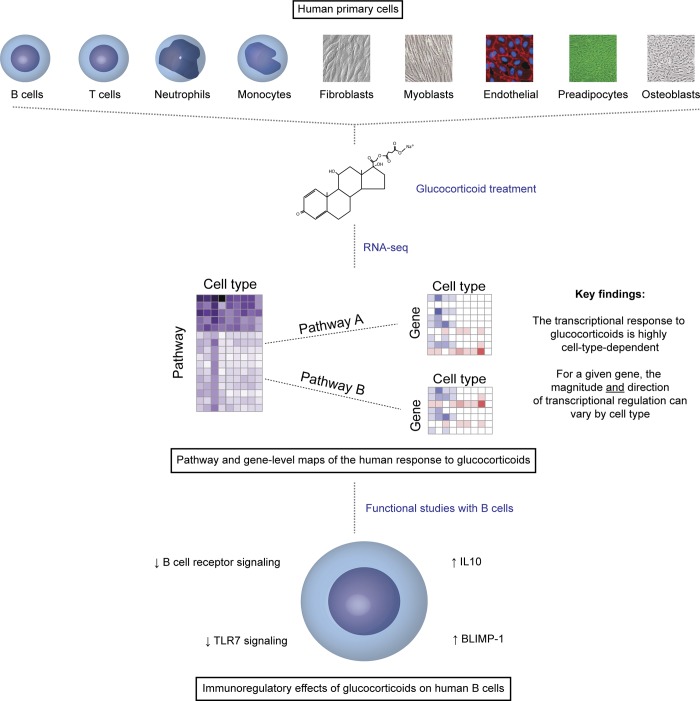- Record: found
- Abstract: found
- Article: found
Immune regulation by glucocorticoids can be linked to cell type–dependent transcriptional responses

Read this article at
Abstract
A functional genomics approach uncovers previously undescribed cell type–dependent responses that can be linked to the immunoregulatory actions of glucocorticoids in humans.
Abstract
Glucocorticoids remain the most widely used immunosuppressive and anti-inflammatory drugs, yet substantial gaps exist in our understanding of glucocorticoid-mediated immunoregulation. To address this, we generated a pathway-level map of the transcriptional effects of glucocorticoids on nine primary human cell types. This analysis revealed that the response to glucocorticoids is highly cell type dependent, in terms of the individual genes and pathways affected, as well as the magnitude and direction of transcriptional regulation. Based on these data and given their importance in autoimmunity, we conducted functional studies with B cells. We found that glucocorticoids impair upstream B cell receptor and Toll-like receptor 7 signaling, reduce transcriptional output from the three immunoglobulin loci, and promote significant up-regulation of the genes encoding the immunomodulatory cytokine IL-10 and the terminal-differentiation factor BLIMP-1. These findings provide new mechanistic understanding of glucocorticoid action and emphasize the multifactorial, cell-specific effects of these drugs, with potential implications for designing more selective immunoregulatory therapies.
Graphical Abstract
Related collections
Most cited references43
- Record: found
- Abstract: not found
- Article: not found
Controlling the False Discovery Rate: A Practical and Powerful Approach to Multiple Testing
- Record: found
- Abstract: found
- Article: not found
Autoreactive B cell responses to RNA-related antigens due to TLR7 gene duplication.

- Record: found
- Abstract: found
- Article: found
